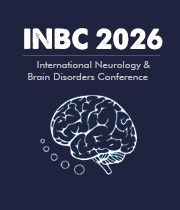Fine Scale Synaptic Interaction
Fine scale synaptic interaction delineates the intricate and precise communication occurring between neurons at the synaptic level within the brain. Synapses, the junctures facilitating neuron-to-neuron communication via neurotransmitter release and reception, are fundamental to neural signaling, memory formation, and cognitive functions. At this microscale, synaptic interactions exhibit remarkable specificity and localization, forging intricate networks crucial for brain function. Each synapse operates dynamically, adjusting its strength and efficacy in response to neural activity—an adaptive phenomenon termed synaptic plasticity. Neurotransmitter release triggers electrical signals in receiving neurons, propagating information throughout neural networks. This fine scale interaction encompasses mechanisms such as synaptic pruning, refining neural circuits during development by eliminating unnecessary synapses, and synaptic scaling, regulating overall synaptic connection strength to maintain neural activity stability. Understanding fine scale synaptic interaction is imperative for unraveling brain function intricacies and dysfunctions. Dysregulation of synaptic interactions underpins various neurological disorders, including Alzheimer's, Parkinson's, and psychiatric conditions. Technological advancements in neuroscience, such as electrophysiology, optogenetics, and advanced imaging, afford unprecedented insights into synaptic interactions. These tools enable scientists to observe and manipulate synaptic activity, elucidating neural communication mechanisms and potential therapeutic avenues. In essence, fine scale synaptic interaction epitomizes the precision and intricacy of neuron communication essential for neural signaling, information processing, and cognitive function, fostering deeper comprehension of brain functionality and paving the way for innovative treatments in neurology.

Joe Sam Robinson
Mercer University, United States
Robert B Slocum
University of Kentucky HealthCare, United States
George Diaz
Memorial Healthcare Systems, United States
Daniel Curry
Texas Children’s Hospital, United States
Zhenhuan Liu
Guangzhou University Chinese Medicine, China
Kiran Ghotra
Lake Erie College of Osteopathic Medicine, United States




Title : Atypical presentation of Juvenile myoclonic epilepsy in a 16-year-old female: A Case Report
George Diaz, Memorial Healthcare Systems, United States
Title : What we don’t know about hydrocephalus and It’s management
Daniel Curry, Texas Children’s Hospital, United States
Title : Artificial intelligence-driven DWI and FLAIR for the detection of early stroke changes: A systematic review
Shari L Guerra, The Medical City, Philippines
Title : Mapping neuroplasticity in occupational therapy: Evidence-based interventions with measurable neural outcomes
Jessica Marchant, Texas Woman's University, United States
Title : Non-pharmacologic management of orthostatic hypotension in inpatient rehabilitation: A quality improvement initiative
Laura Steakin, Rehabilitation Institute at Sinai, United States
Title : Non-pharmacologic management of orthostatic hypotension in inpatient rehabilitation: A quality improvement initiative
Mackenzie Weber, Rehabilitation Institute at Sinai, United States